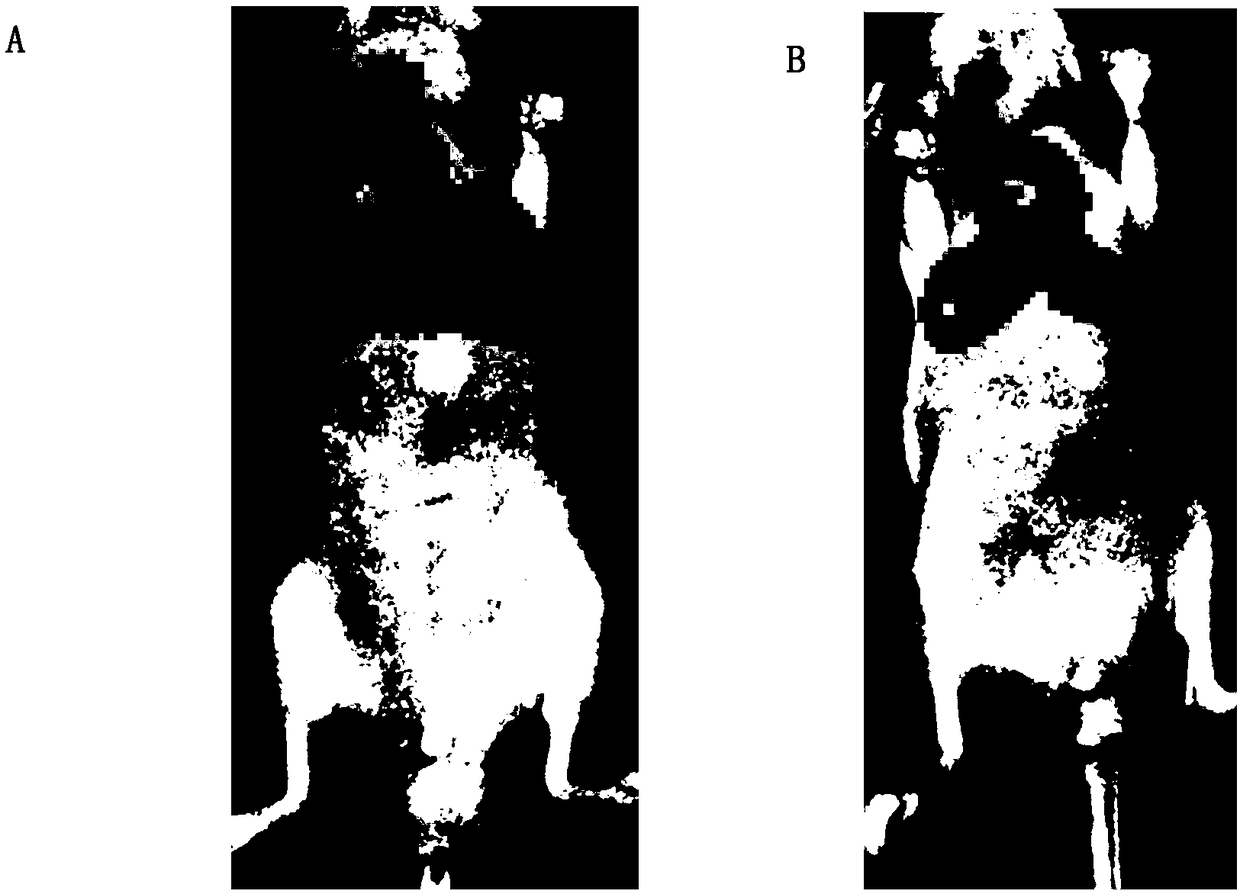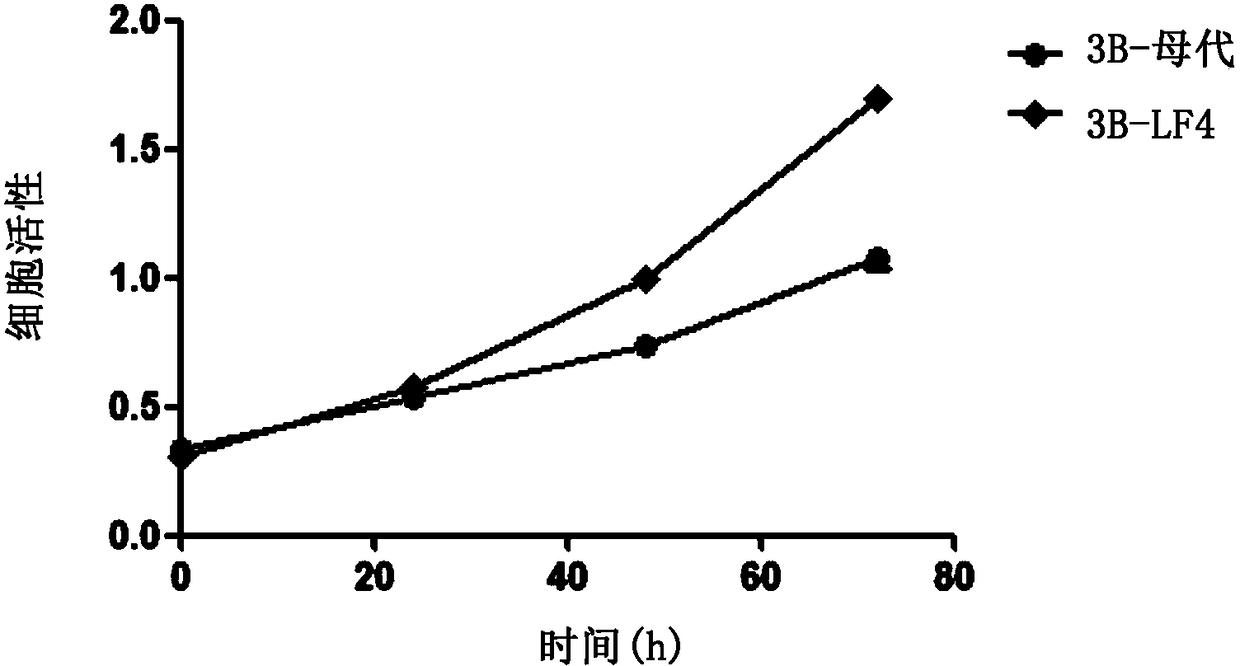Novel lung specificity transfer liver cancer cell and preparation thereof
A liver cancer cell and specific technology, applied in the fields of biology and oncology, can solve the problems of large differences in the expression of specific markers, poor tumorigenicity, and difficulty in culturing tumor cells
- Summary
- Abstract
- Description
- Claims
- Application Information
AI Technical Summary
Problems solved by technology
Method used
Image
Examples
Embodiment 1
[0078] Example 1 Screening and identification of lung-specific metastatic liver cancer cell lines
[0079] The cells were first marked with GFP for the isolation of lung metastatic cells. Secondly, the cells were modified to stably express luciferase enzyme, which can be used for mouse live imaging to detect cell location and quantitative analysis. At the same time, the modified cells were labeled while constructing luciferase enzyme m-cherry, as a selection marker for luciferase-positive cells. Compared with the original hep-3B cells, the migration ability of the cells was significantly enhanced.
[0080] Specifically, luciferase-labeled hep-3B cells were injected into nude mice through the tail vein, and randomly metastatic liver cancer lesions appeared in the mice in 20-40 days, that is, the primary hep-3B cells did not have the organ specificity of metastasis. Among the randomly transferred mice, the mice with target organ metastasis were selected, the tumor mass of the l...
Embodiment 2
[0082] Example 2 Establishment and identification of a mouse model of lung-specific metastasis of liver cancer cells
[0083] 2.1 will be 5×10 5 -1×10 6 A lung-specific metastatic liver cancer cell (or its progeny cells) was inoculated in nude mice for 21-42 days, the lungs of the mice were taken out, shredded, digested with collagen enzyme to obtain a single-cell suspension, and cultured in DMEM medium until the cells adhered to the wall. GFP-positive cells were sorted by flow cytometry to obtain lung-specific metastatic liver cancer cells.
[0084] 2.2 Passage activity identification
[0085] It has been identified that the subculture activity of the cells is good, and the specific lung metastasis can still be stable after 15-20 passages, such as figure 2 b.
Embodiment 3
[0086] Example 3 Gene expression profile identification of lung-specific metastatic liver cancer cells
[0087]After culturing hep-3B cells and lung metastasis-specific cells for 2 passages, some of the cells were sent for preservation, and some of the cells in the parallel passages were identified for genetic characteristics, including gene sequencing, differential detection of miRNA profiles and mRNA profiles, cell adhesion, and When the culture dish reaches 50-70%, trypsinize, collect cells by centrifugation, lyse the cells by trizol method, extract RNA, reverse transcribe and perform mRNA expression chip (Shanghai Bohao Biotechnology Co., Ltd.) detection and gene sequencing. As a result, it was found that the genetic characteristics of the preserved cells and each progeny (2-15 generations) were the same.
PUM
 Login to View More
Login to View More Abstract
Description
Claims
Application Information
 Login to View More
Login to View More - R&D Engineer
- R&D Manager
- IP Professional
- Industry Leading Data Capabilities
- Powerful AI technology
- Patent DNA Extraction
Browse by: Latest US Patents, China's latest patents, Technical Efficacy Thesaurus, Application Domain, Technology Topic, Popular Technical Reports.
© 2024 PatSnap. All rights reserved.Legal|Privacy policy|Modern Slavery Act Transparency Statement|Sitemap|About US| Contact US: help@patsnap.com










